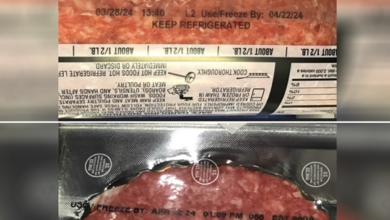USDA announces changes coming to school meals: What to know

(NEW YORK) — The nearly 30 million kids who eat meals at schools each day in the United States will soon see some changes to the food they are served.
On Wednesday, the U.S. Department of Agriculture announced a series of changes to nutrition standards for school meals, including one that is a historic first.
Here are three things to know about the changes coming to breakfast and lunch meals served at school:
1. Added sugars will now be limited in meals
The biggest change announced by the USDA is that, for the first time, there will be limits on added sugars in school meals.
Currently, schools only have to meet weekly calorie limits, regardless of the added sugars in the foods they serve, according to the USDA.
With this new change, beginning on July 1, 2025, breakfast cereals served at schools will be limited to no more than 6 grams of added sugars per dry ounce; yogurt may have no more than 2 grams of added sugars per ounce; and flavored milk may have no more than 10 grams of added sugars per 8 fluid ounces.
In addition, a second rule, which will take effect on July 1, 2027, requires that added sugars be less than 10% of calories across the week in the school lunch and breakfast programs, according to the USDA.
“USDA heard concerns from parents and teachers about excessive amounts of added sugars in some foods, which factored into this new limit,” the agency said in a news release announcing the changes. “Research shows that these added sugars are most commonly found in typical school breakfast items.”
According to the Centers for Disease Control and Prevention, children under the age of 2 should not have any added sugars in their diet.
For people age 2 and over, added sugars should constitute less than 10% of their daily calories, according to the CDC. If a child consumes 1,600 calories per day, for example, no more than 160 calories of those should come from added sugars.
Eating too many added sugars — common in processed foods, desserts, and sugar-sweetened beverages — is associated with obesity, type 2 diabetes, tooth decay and heart disease, according to to the CDC.
2. Sodium is being gradually reduced in school meals
Beginning on July 1, 2027, school lunches will see a 15% reduction from current limits, while sodium in breakfast meals will see a 10% reduction, according to the USDA.
The USDA said it is allowing current sodium standards to remain for the next three years to give schools, manufacturers, and the general public time to adapt.
“USDA is providing about three years for implementation of the sodium reduction in response to public comments that suggested it takes about three years for manufacturers to reformulate products,” the agency said. “Public comments also indicated that children are more likely to accept lower sodium school meals if the meals they consume outside of school are lower in sodium. To that end, other federal agencies are supporting efforts to improve dietary behaviors among the U.S. population.”
Eating too much sodium, the majority of which comes from processed foods, can “increase your blood pressure and your risk for heart disease and stroke,” according to the CDC.
3. Chocolate milk will still be served, but with limits
The USDA said it will allow schools to continue to sell fat-free and low-fat and flavored and unflavored milk to students.
Beginning on July 1, 2025, however, flavored milk sold at schools will have to meet the new added sugars limits.
Flavored milk offered to K-12 students in school breakfast and lunch must contain no more than 10 grams of added sugars per 8 fluid ounces, according to the USDA, while flavored milk sold a la carte in middle and high schools must have no more than 15 grams of added sugars per 12 fluid ounces.
Copyright © 2024, ABC Audio. All rights reserved.






